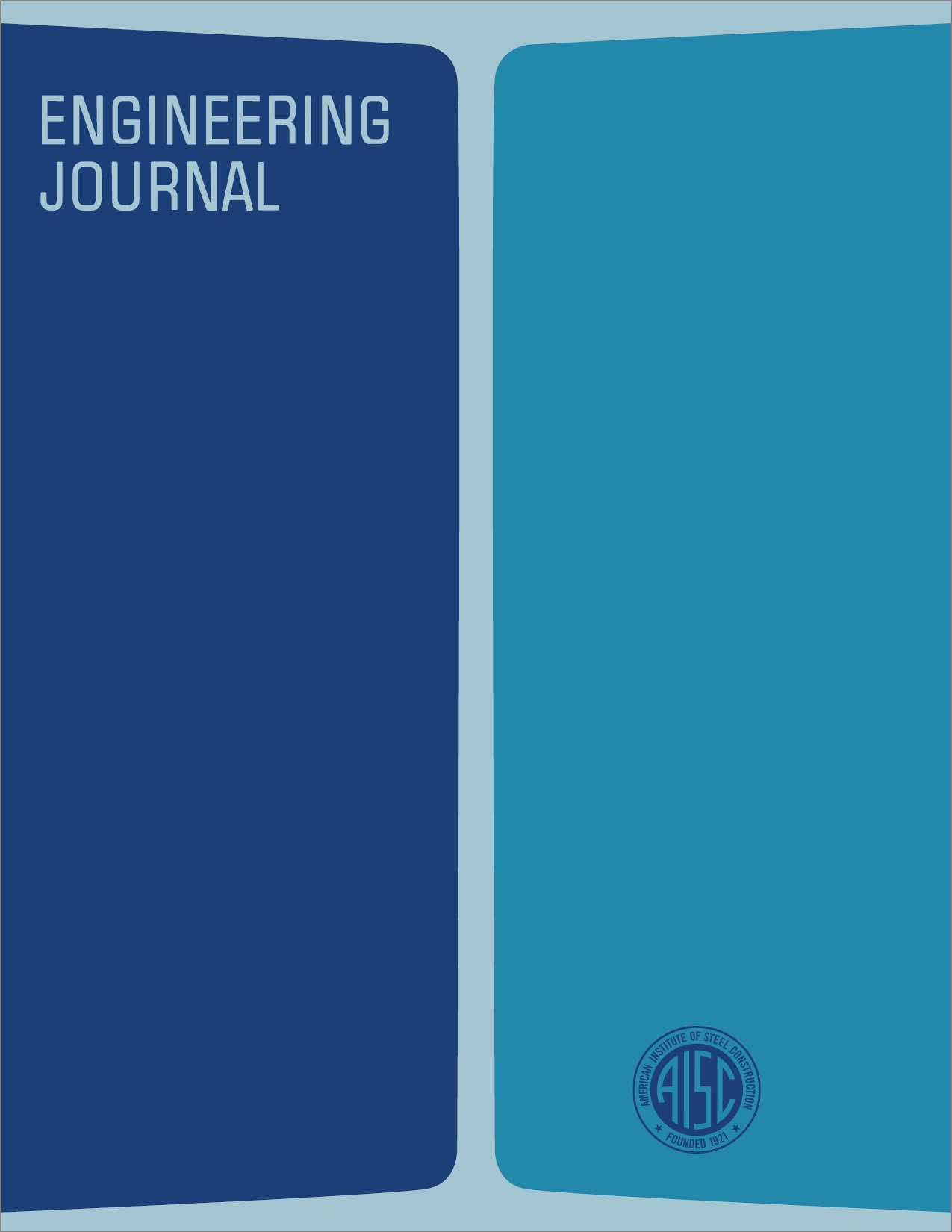The Application of Flexural Methods to Torsional Analysis of Thin-walled Open Sections
DOI:
https://doi.org/10.62913/engj.v21i4.430Abstract
The analysis of torsionally loaded thin-walled members of open cross-section is complicated by the presence of warping stresses. Warping normal and shear stresses arise from restraint of longitudinal warping of the cross-section due to end restraints or variations in the internal torque along the length of the member. In a typical thin-walled open member, such as a rolled or cold-formed steel section, warping normal stresses tend to be the critical torsional stress component. The usual method for analysis of warping stresses involves solution of the torsion differential equation to determine rotation of the member about the longitudinal axis. Torsional and warping stresses are functions of various order derivatives of the rotation with respect to the length. This method is described in detail in many sources, including Refs. 1 and 4-9. A recent AISC publication1 presents nondimensionalized solutions of the torsion differential equation for various end conditions and loading cases of a single span straight member, which can be used for determination of torsional stresses. For steel I sections, torsional loading can be resolved into opposite lateral forces acting on flanges and an upper bound to warping stresses can be obtained by determining the resulting bending normal and shear stresses in the flanges. This flexural analogy is applied to determination of warping normal and shear stresses in Refs. 6, 8 and 9. A more general bending-warping analogy, presented in Ref. 7, can be applied to C, Z and other sections commonly used in cold-formed construction.

